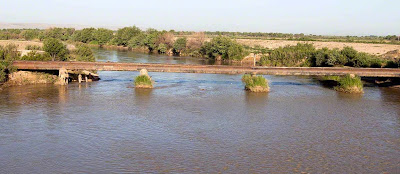Turkey | Istanbul | Theodosian Land Wall

While wandering through Istanbul I stayed in a hotel in the Topkapi district, hard by the Theodosian Land Wall of Istanbul. This area is about three miles west of Sultanahmed , the heart of old Istanbul. The hotels out here are a lot cheaper than closer to the center, and the pace is a lot less frantic, especially on the quiet side street where I am staying. There are numerous small restaurants and tea shops in the immediate area if one cares not to roam, but it is only a fifteen or twenty minute ride on the metro to the Area of the Grand Bazaar and Sultanahmed , in case one wants to immerse oneself in the hubbub of the city. And of course Topkapi is a convenient starting point for wandering along the ancient Theodosian Land Wall of Istanbul. As John Julius Norwich points out in Volume 1 of his magisterial three-volume history of the Byzantine Empire, Byzantium: The Early Centuries : It is one of the clichés of Constantinople [Istanbul] that it should, ideally, be approached by the



